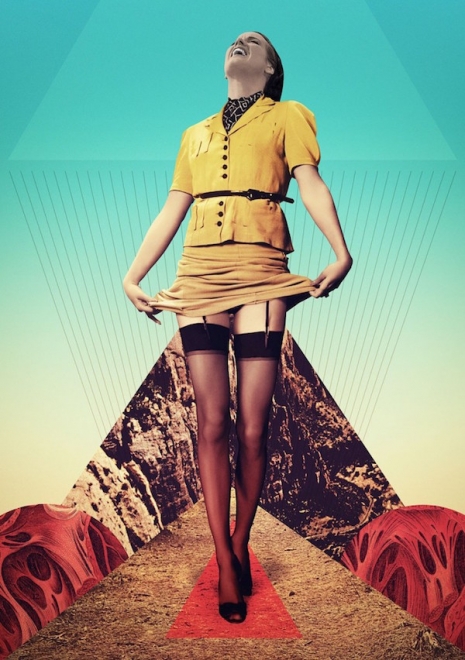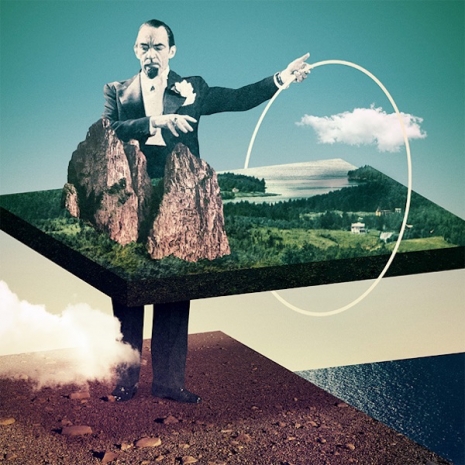
Tulip.
I think it was C. P. Snow in a book about the artist Brian Clarke who pointed out that art preceded science. He alluded to the way artists had broken down objects into geometric forms from Cezanne to Picasso, Braque, and Cubism, to the wild canvas splatter of Jackson Pollock that all anticipated the atomic age. Snow was a very earnest and serious writer with tremendous pretensions to being a great, if not the greatest writer—he long thought he deserved the Nobel Prize for Literature. It was the kind of self-agrandizement that comes from a life where one brooks no disagreement from others. But Snow did have a point and is still an author worth reading. Art does, in some ways, prefigure science. An easy example, Warhol’s endless silk screens suggest a digital age of (im)perfect cloning or nanobiology and cell-replication. So it is with the art of the collage—our modern world of multiple voices, multiple viewpoints, multiple screens all contained within one frame like television of the Internet or our minds.
French artist Julien Pacaud calls his work “digital collage” as he uses a computer to create his artworks rather than the traditional method of scissors and glue. Self-taught, Pacaud claims he works by instinct. He flicks thru vintage magazines and old books looking for an image that will inspire him. Once found, he scans these images, stores them, before returning to them to find out where they might take him. When he starts a collage, he has no set plan. It develops by trial and error, accident and chance. A process which eventually reveals its own path.
I think that what drives my creation is my subconscious—the ways I express myself come rather randomly. I also don’t feel the need to explain my artworks, and am happy for anyone who interprets my work however they want—even if I created the piece with a specific idea in mind.
Pacaud has described his work as “organizing chaos,” depicting his “inner need” to bring structure to the disparate elements in his work—the clash of landscape and geometric form; of nature and human construct; of desire and the failure of communicate. In a way, he is creating myths for a modern age. His influences range from The Twilight Zone to David Lynch’s Twin Peaks, but he first attracted to the possibilities of collage by Storm Thorgerson’s cover design for Pink Floyd’s album Wish You Were Here—two men shake hands on a deserted backlot, one is on fire. It could be an image out from Pacaud’s portfolio.
Based in Paris, Pacaud was “an astrophysician, an international snooker player, a hypnotist and an esperanto teacher” before turning his skills to art. He works as an illustrator contributing to newspapers, magazines, and books. His work has also been used on the covers of several albums by the likes of Hushpuppies, Jeff Mills, and (Swedish) Death Polka. He also produces his own music. A book of his work, Perpendicular Dreams was published last year, and a second volume will be released this year. His work is available to buy and more can be seen here.

Funny Games.

Magical Geographic.

One Million Years Trip.
More organized chaos, after the jump…





